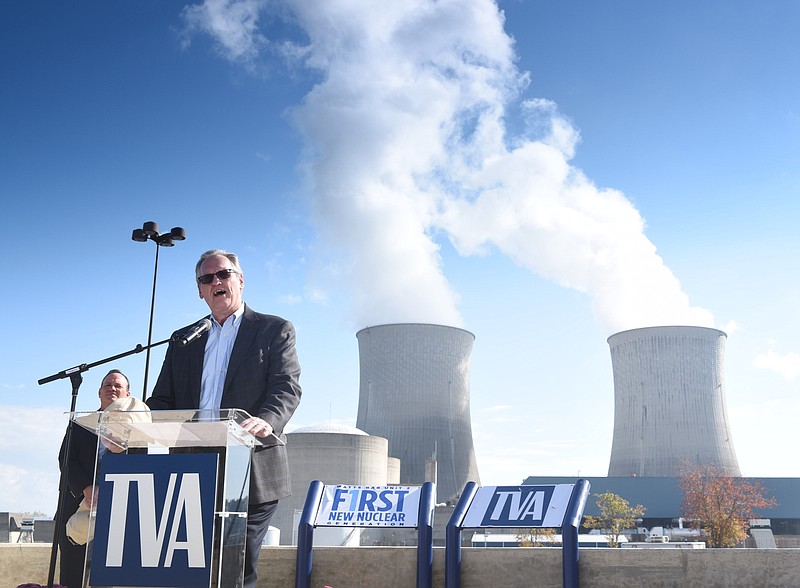Despite a drop in power sales in the past year, the Tennessee Valley Authority boosted its net income in the fiscal year ended Sept. 30 to the highest level in the utility's 83-year history.
TVA said today net income in fiscal 2016 rose nearly 11 percent to more than $1.2 billion even though revenues from elecricity sales were down 3.4 percent due to relatively stagnant power demand and a slight drop in power rates in the past year.
TVA's 10,000 employees should soon benefit from the improved financial results. Based upon TVA beating its budget targets and meeting other performance metrics, TVA directors today agreed to pay the full amount of winning performance bonuses to its rank and file workers and to pay even higher performance bonuses for top managers.
TVA board members also voted to raise the amount that its CEO Bill Johnson may earn next year. Although Johnson is the highest paid federal employee in America, personnel consultants estimate his pay is less than 25 percent of the average for CEOs at comparable investor-owned utilities.
"Virtually all of our financial metrics are headed in the right direction," TVA Chief Financial Officer John Thomas told the TVA board today during a quarterly meeting today in Blairsville, Ga.
Thomas said TVA cut its operating and maintenance expenses in the past year by about $800 million "and all of that money that was generated by these savings went into debt reduction," Thomas said.
TVA spent a near record $3.1 billion on capital improvements in fiscal 2016, but TVA was still able to capitalize on cheaper fuel to reduce its average delivered price of power to its customers from 6.9 cents per kilowatthour a year ago to 6.7 cents per kilowatthour today.
"Lower rates for our customers were driven by lower expenses, lower debt and higher net income," Thomas said. "We are seeing the benefits of implementing our long-range strategies."
